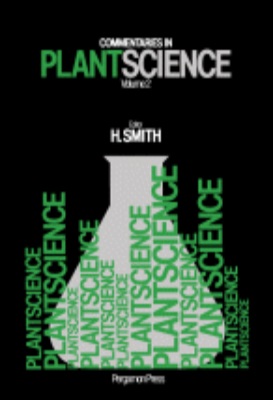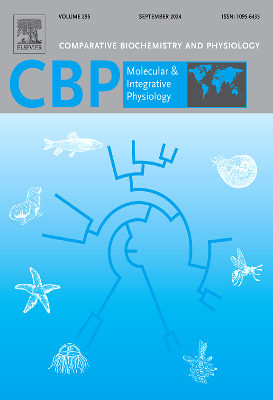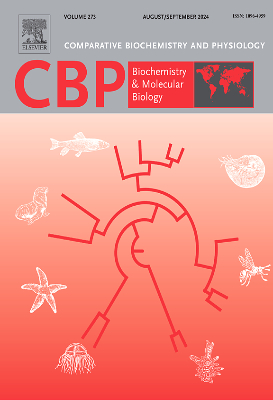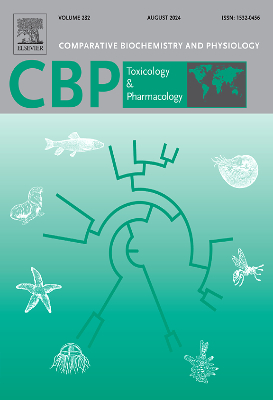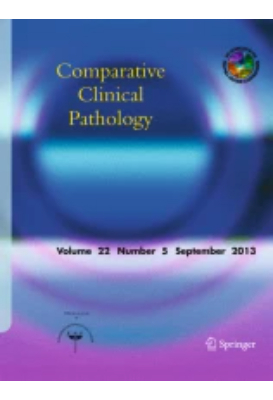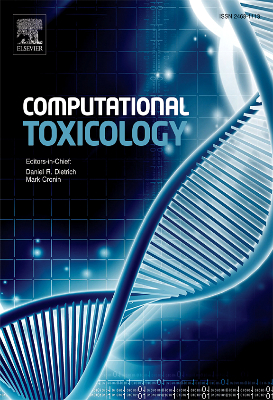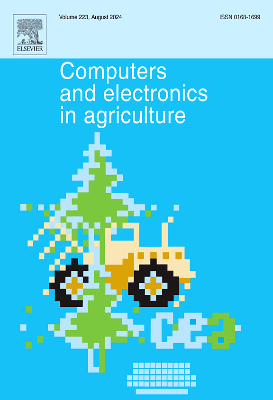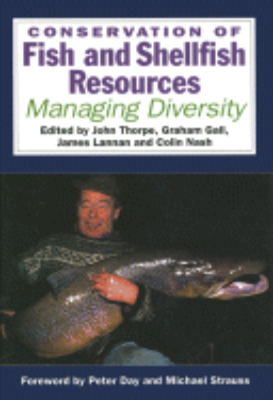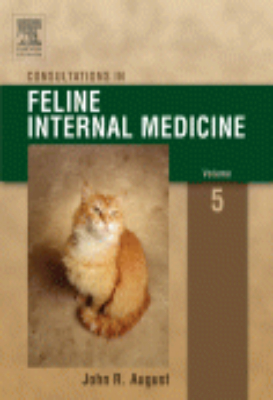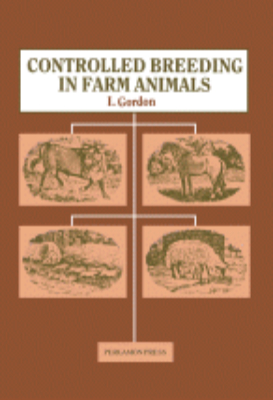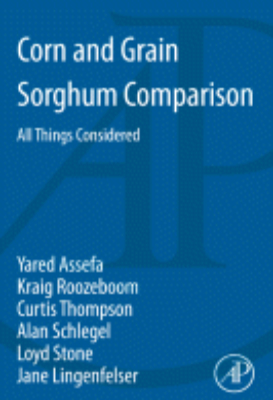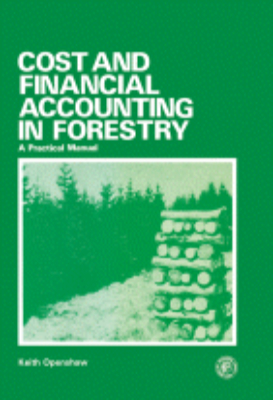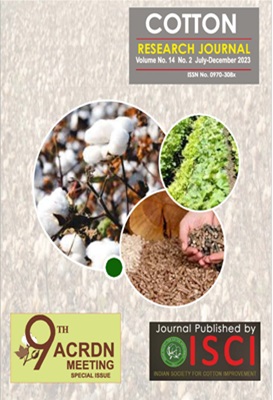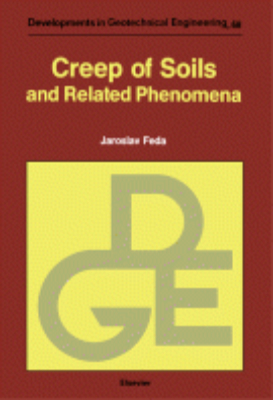Agricultural Science
Color Atlas of Diseases and Disorders of the Foal
Color Atlas of Diseases & Disorders of the Foal is intended for any veterinarian who treats foals, either occasionally or on a routine basis, and serves as an invaluable source of practical clinical information. The illustrations cover all aspects of clinical presentation, diagnosis, treatments, and outcomes and provide a clear picture of what veterinarians should be looking for, perfect for timely intervention and more successful outcomes. Plus, two highly experienced editors share their expertise along with contributions from many well-known and highly respected veterinarians for the most comprehensive information available.
Color Atlas of Veterinary Pathology
For over 20 years, the first edition of this book provided veterinary students and pathologists with an invaluable fast and structured survey of the complete field of veterinary pathology. Now in its second edition, the authors have thoroughly revised, updated and added to both images and text, with the focus still on domestic animals. Each chapter now begins with a short, descriptive text on each body system covered in the atlas. It supports understanding of disease and disease processes by visualizing how cellular pathology, inflammation, circular disturbance and neoplasia are expressed in the different organs and tissues. For this purpose it demonstrates the general morphological reactions of organs and tissues using examples from specific veterinary pathology.
Commentaries in Plant Science: 1976
Commentaries in Plant Science is a compilation of reviews of recent developments in pure and applied plant science. It covers a wide range of topics such as carboxylation, photorespiration, carbon assimilation, mating reaction, protein evolution, recombination, and photoperiodic induction. The book is comprised of 21 commentaries and begins with some of the physiological processes in C4 plants. The succeeding chapters deal with stomatal control of entry of air pollutants, mating reactions in yeasts, uptake and expression of DNA by plants, mechanics and metabolisms of guard cells, breeding for modified fatty acid composition, gravity sensing mechanism and response mechanism of root caps. It also outlines the functions of lectins, plant virus inhibitors, and cytokinins. Research workers, teachers and students who wish to broaden their knowledge about plant science will find this book very useful.
Commentaries in Plant Science: Volume 2
Commentaries in Plant Science, Volume 2 is a collection of papers that reviews developments in the pure and applied science of plants. One paper discusses the role of supercooling in the winter survival mechanism of and ecological distribution of many plant communities. Another paper evaluates the Cholodny-Went theory of shoot geotropism that there is strong evidence in auxin redistribution occurring in a rapid manner to cause geotropic curvature. The magnitude of auxin redistribution is too rare to cause differential growth. Some insect pests have specific nutritional requirements and well-developed mechanisms for selecting their plant host. One paper enumerates the benefits of using insect-resistant host plant varieties, such as the non-incurrence of extra costs, these are environmentally safe, and are compatible with most other methods of pest control. Another paper discusses the nature and possible genetic manipulation of a complex bacteria, the actinomycetes, as well as its role as antibiotic producer. Another paper examines the nature of seed storage proteins and of the cellular processes that are related in their synthesis and deposition especially in cereals and legume. This collection is suitable for botanists, genecologists, taxonomists, biologists, and investigators whose works involve cell membrane research.
Comparative Nutrition of Man and Domestic Animals
Comparative Nutrition of Man and Domestic Animals, Volume I discusses practical phases in the evaluation of the nutrient requirements of man and his domesticated animals and the factors that modify these quanta. This book also covers various nutrients' biochemical nature, functions, and participation in the energy transactions of the body. Organized into 11 chapters, the book initially discusses the principles of the basal metabolism and the activity increment and their role in evaluating maintenance requirement of human and animal for energy. The subsequent chapter focuses on the maintenance requirement of protein under stress and non-stress conditions. Other chapters discuss nutrient requirements for maintenance, such as water and minerals. The book also examines the nutrient requirements for muscle activities, growth, senescence, reproduction, and lactation. A discussion on the storage of nutritive material, such as water, protein, minerals, vitamins, and energy, is included. This volume is an invaluable source for organic chemists, biochemists, animal physiologists, zoologists, and nutritionists.
Conservation of Fish and Shellfish Resources
"Fish and shellfish comprise annually nearly 70-million tons of the world's edible animal protein. However, because of this demand, previously vast stocks have often been exhausted to the point of near extinction. The first book of its kind in the area of freshwater/marine biodiversity, this extensive work reviews the present status of genetic resource management, its needs and constraints, various intervening human factors such as pollution and overfishing, and problems posed by different species and life-styles. This discussion of the conservation of fish and shellfish resources is illustrated by four diverse groups: Atlantic salmon, cupped oysters, common and Chinese carp, and Nile tilapia. These results, produced by the collaboration of nine leading population and production geneticists, aquaculturists, and behavioral and developmental ecologists should become a fundamental resource useful to biologists, scientists and advisors exploring current issues in the fishery sciences. Key Features. Four page color plate section. Database of key organizations for contact purposes. Foreword by Dr. Mike Strauss, Am. Assoc. for the Advancement of Science; and Dr. Peter Day, Rutgers University. Four in-depth case studies by international experts. Editors are major names in marine/freshwater fisheries science. Originally sponsored and reviewed by U.S. National Academy of Sciences"
Consultations in Feline Internal Medicine
An invaluable addition to every small animal clinician's library, this resource investigates the latest topics and therapies in feline internal medicine such as neurogenic micturition disorders, chronic rhinosinusitis, feline asthma, osteoarthritis and geriatrics, obesity and its health consequences, shelter medicine, overpopulation, cruelty toward cats. Includes new, full-color illustrations throughout!
Contemporary Problems in Plant Anatomy
Contemporary Problems in Plant Anatomy contains the proceedings of a plant anatomy symposium that took place at Duke University and The University of North Carolina at Chapel Hill in 1983. The symposium addressed challenges in four basic research areas in contemporary plant anatomy: leaf development, floral development, differentiation of cells and tissues, and systematic and ecological anatomy. The book highlights new techniques and approaches for dealing with problems in each of these areas. Organized into 12 chapters, this volume begins with an overview of the stem-conducting tissues in monocotyledons; the development of vascular tissue patterns in the shoot apex of ferns; the role of subsidiary trace bundles in stem and leaf development of the dicotyledoneae; and the structure of phloem. It then discusses the cellular parameters of leaf morphogenesis in maize and tobacco; alternative modes of organogenesis in higher plants; morphological aspects of leaf development in ferns and angiosperms; the origin of symmetry in flowers; and intraspecific floral variation. The reader is also introduced to structural correlations among wood, leaves, and plant habit; relationships between structure and function in trees; and the development of inflorescence, androecium, and gynoecium with reference to palms. This book is a valuable source of information for plant anatomists.
Controlled Breeding in Farm Animals
This textbook provides a detailed view of the different ways in which reproduction in cattle, sheep, pigs and horses can be controlled and manipulated. It is primarily of interest to students of animal science and veterinary medicine, but will also be of use to those who are concerned with the practical aspects of reproduction control, whether in an advisory capacity or in applying techniques on the farm itself. A major objective of the book is to draw attention to information which may be used directly to increase the efficiency of the livestock industry.
Controlled Environment Guidelines for Plant Research
Controlled Environment Guidelines for Plant Research contains the proceedings of the Controlled Environments Working Conference held in Madison, Wisconsin, on March 12-14, 1979. The papers propose guidelines for measuring and reporting environmental conditions in controlled environment facilities that affect plant growth, including temperature, radiation, carbon dioxide, soil moisture, atmospheric moisture, and air movement. They also suggest how to perform measurements accurately and in ways that can be repeated by other investigators. Organized into 34 chapters, this volume begins with an overview of measurement, instrumentation, and procedures for growing plants in controlled environments. It then turns to a discussion of radiation measurements for plant growth studies in controlled environments; principles of heat transfer; plant response to increased humidity; humidification and dehumidification; carbon dioxide variations within plant growth chambers; and watering of plants in controlled environments. The reader is also introduced to precision and replication of measurements, along with interactions among environmental factors such as water, light intensity, mineral supply, temperature, air pollution, and nutritional preconditioning. Biologists and engineers, as well as plant physiologists and physicists, will find this book extremely useful.
Controlled Release Veterinary Drug Delivery
Many controlled release veterinary drug delivery systems (CRVDDS) are presently in use, and recently there has been a host of new CRVDDS within veterinary medicine. The challenges of this area of drug delivery arise from the unique anatomy and physiology of the target animal, the cost constraints associated with the value of the animal being treated and the extended periods of time that delivery must be sustained for (often measured in months). The purpose of this book is to introduce the reader to the unique opportunities and challenges of the field of CRVDDS and to explain and discuss the basic controlled release principles underlying the development of CRVDDS. Its aim is to provide an overview of many of the areas where CRVVDS have application, and to highlight the opportunities and prospects for controlled release technology in the veterinary field. Controlled Release Veterinary Drug Delivery comprises chapters that provide workers in the field (and those interested in this area) with information on the design, development and assessment of a variety of CRVDDS. The book contains chapters that describe the relevant animal physiological and anatomical considerations alongside descriptions of current and emerging controlled release delivery systems for a variety of routes for drug delivery, and present overviews on the physical and chemical assessment of veterinary controlled release delivery systems. The veterinary area is abound with opportunities for the development of controlled release drug delivery technologies. It is an area of medicine that is open to the acceptance of novel drug delivery devices, and which readily encompasses the use of novel routes of administration. It is an area of many unmet needs, most of which offer opportunities and unique challenges for the innovative formulation scientist to provide solutions. This book will provide an insight into the biological, clinical and pharmaceutical challenges that face the formulation scientist in this interesting and diverse area of research.
Coral Reef Fishes
"Coral Reef Fishes is the successor of The Ecology of Fishes on Coral Reefs. This new edition includes provocative reviews covering the major areas of reef fish ecology. Concerns about the future health of coral reefs, and recognition that reefs and their fishes are economically important components of the coastal oceans of many tropical nations, have led to enormous growth in research directed at reef fishes. Coral Reef Fishes is much more than a simple revision of the earlier volume; it is a companion that supports and extends the earlier work. The included syntheses provide readers with the current highlights in this exciting science. Key Features. An up-to-date review of key research areas in reef fish ecology, with a bibliography including hundreds of citations, most from the last decade. Authoritative, up-to-date, provocative chapters written to suggest future research priorities. An important companion and successor to The Ecology of Fishes on Coral Reefs. Includes discussions of regulation of fish populations, dispersal or site fidelity of larval reef fishes, sensory and motor capabilities of reef fish larvae, and complexities of management of reef species and communities"
Corn and Grain Sorghum Comparison
"Corn and grain sorghum (Sorghum bicolor subsp. bicolor L) are among the top cereal crops world wide, and both are key for global food security. Similarities between the two crops, particularly their adaptation for warm-season grain production, pose an opportunity for comparisons to inform appropriate cropping decisions. This book provides a comprehensive review of the similarities and differences between corn and grain sorghum. It compares corn and sorghum crops in areas such as morphology, physiology, phenology, yield, resource use and efficiency, and impact of both crops in different cropping systems. Producers, researchers and extension agents in search of reliable scientific information will find this in-depth comparison of crops with potential fit in dryland and irrigations cropping systems particularly valuable. Key Features. Presents a wide range of points of comparison. Offers important insights for crop decision making"
Cost and Financial Accounting in Forestry
Written for the forest manager, land agent and the forestry/rural economy student, either at the technical or university level, this book describes how systems of cost and financial accounting and financial yield may be built up, every step being illustrated by a series of interrelated examples. Financial accounting gives a precise view of a forest venture from year to year, whereas financial yield endeavours to show the profitability of a tree crop over its rotation. Cost accounting probes into detail and is an essential management tool for budget control, profit maximisation and planning. It may thus be said that the book deals with an important and essential aspect of forestry
Cotton Research Journal
One of the early actions of ISCI has been the launching of a research journal to fill the vacuum created by the stoppage of predecessors like (a) the Indian Cotton Growing Review published by the Imperial Cotton Growing Corporation of UK and (b) the Indian Cotton Development Journal published by the Directorate of Cotton Development. For many decades, these journals had remained as vehicles for research findings on cotton production technologies in India. By 1970 both these journals ceased to appear. The inaugural issue of the ISCI Journal was published in January 1976, since then the periodical has witnessed increasing patronage from cotton scientists from all over India and abroad. By 1990s, the 6- monthly journal had transformed into a quarterly publication to accommodate the rising number of articles originating from ICAR institutes and agricultural universities in which government funded research programmes were on the increase.
Crop Cultivars Developed Through Molecular Breeding
I
ndian Council of Agricultural Research (ICAR) from its inception has spearheaded country?s
preparedness towards feeding the ever-increasing population. The development of improved
high yielding varieties during 1960s made significant increase on food production through
?Green Revolution?. So far, 5800 cultivars of different field crops have been released for cultivation
in various agro-ecosystems of the country. However, development of cultivars takes quite
long time, which generally takes 10-12 years. Taking the help of modern tools, scientists have
been able to curtail the breeding cycle to develop cultivars much faster. ?Molecular Breeding?
technology provides significant advantage over ?traditional breeding? methods, where (i) the
target gene is selected with more precision, (ii) desirable plants are selected at the seedling stage
much before expression of the trait(s), (iii) costly and cumbersome phenotyping during the
breeding programme is bypassed, and (iv) breeding cycle is significantly shortened to 5-6 years.
Using ?Molecular Breeding?, 74 varieties in seven crops namely, rice, wheat, maize, pearl millet,
chickpea, soybean and groundnut have been released for commercial cultivation in India.
It includes, 43 in rice, five in wheat, six in chickpea, six in soybean, two in groundnut, 10 in
maize and two in pearl millet with improved biotic stress resistance, abiotic stress tolerance and
nutritional quality.
This bulletin entitled, ?Crop Cultivars Developed Through Molecular Breeding (second edition)?
highlights the salient features of the varieties and hybrids developed through accelerated
breeding. I dedicate this information bulletin to all our farmers with a hope that these varieties
will reduce the risk due to climate change and enhance their income.
Crop Physiology
"From climate change to farming systems to genetic modification of organisms, Crop Physiology, Second Edition provides a practical tool for understanding the relationships and challenges of successful cropping. With a focus on genetic improvement and agronomy, this book addresses the challenges of environmentally sound production of bulk and quality food, fodder, fiber, and energy which are of ongoing international concern. The second edition of Crop Physiology continues to provide a unique analysis of these topics while reflecting important changes and advances in the relevant science and implementation systems. Contemporary agriculture confronts the challenge of increasing demand in terms of quantitative and qualitative production targets. These targets have to be achieved against the background of soil and water scarcity, worldwide and regional shifts in the patterns of land use driven by both climate change and the need to develop crop-based sources of energy, and the environmental and social aspects of agricultural sustainability. Key Features. Provides a view of crop physiology as an active source of methods, theories, ideas, and tools for application in genetic improvement and agronomy. Written by leading scientists from around the world. Combines environment-specific cropping systems and general principles of crop science to appeal to advanced students, and scientists in agriculture-related disciplines, from molecular sciences to natural resources management"




